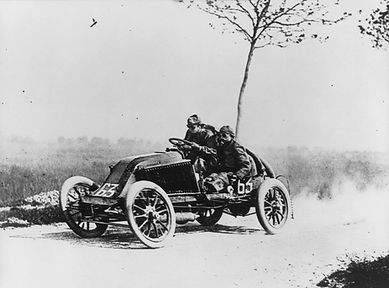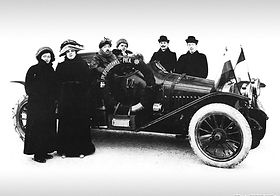WHAT IS RALLY
That magic word which summons up emotions in some people, while for others it is more closely connected with a desire for adventure. There are even those for whom this word is synonymous with their entire lives. But just what exactly is a "rally"? If we look it up in the dictionary, we will mostly find just a simple translation which defines it as a "reunion", "meeting" or, at best, a "star ride" which started at towns all over Europe and ended up in universal finish line. It is indeed true that in its original meaning , for which we must go back more than a century, it was defined as a meeting of the first pioneers of motoring. Its basic aim was to show the world that the automobile had grown up from its infancy and had become, at the very least, a restless teenager, who was capable of having a life of their own. These were times when only a single car per week would pass through the average village, and the appearance of such a vehicle would send a shockwave of amazement throughout the whole surrounding community. It was surely an experience that one would never forget. Automobiles and the technologies they employed did, however, have a long way to go in terms of technical perfection and reliability. This meant that great demands were put upon the vehicle's crew and to imagine completing a trip as an individual or even with a partner was virtually unthinkable. As technology started to improve, these long-distance journeys did become longer and more difficult. New rules had to be implemented to somewhat unify the conditions and to give these journeys, which began to be called automobile competitions, some sort of a stable format. Emphasis was starting to be put not only on completing an ideal route from point A to point B, but also on reaching checkpoints within the allotted time, average speeds, and the technical parameters of individual cars. Any sort of deviation from these rules meant receiving a large number of penalty points. As more cars appeared on the streets, it was necessary to deal increasingly more with the issue of safety in public transportation. It was at this time that the first closed sections were created where crews would race against the clock for points, and the drivers point totals would then be used to determine what place the drivers came in at the end of the race. The popularity of these races began to soar and the sport soon could be found in all corners of the world. The number of crew members stabilized at two and it also became quite normal for the two crew members to take turns in driving the car, which was often the only way to achieve a good result in the race. They both could also read maps, navigate, and, of course, carry out minor repairs during journeys and did so under very primitive conditions. All of this had one amazing side effect. In contrast to the races on closed circuits, the crews encountered various dangers and wonders of nature while getting to know foreign lands and people. They had the opportunity to found new friendships as well as get to know many foreign customs and mentalities. Tight bonds were formed even between the individual crews and it was often only selfless mutual assistance that allowed the crews to even rich the finish line at all. When you add to all of this the magnificent freedom of travel on all existing roads which one can only dream of in both the summer and winter, during the day or at night, in the rain or in the baking sun, and not least of all while crossing rivers, deserts and high mountains, where you cannot find a single living soul, can you then get an answer to the question of what a rally really is and what it is that makes it unique and so fascinating. It is exactly in this spirit that we have put together these pages, which aim to recall the legacy of this beautiful sport and how it has been developing for many decades.



Oldrich Svabek

Beginning and pre-war era
The term "rally" as a branch of motorsport, probably dates from the first Monte Carlo Rally of January 1911. Until the late 1920s, few if any other events used the term. Rallying itself can be traced back to the 1894 as Paris–Rouen Horseless Carriage Competition ...

Interwar and post war years
The First World War brought a lull to rallying. The Monte Carlo Rally was not resuscitated until 1924, but since then, apart from World War II and its aftermath, it has been an annual event and remains a regular round of the World Rally Championship. In the 1930s, helped ...

Modern era
The introduction of the special stage brought rallying effectively into the modern era. It placed a premium on fast driving, and enabled healthy programmes of smaller events to spring up in Britain, France, Scandinavia, Belgium and elsewhere.
Since then, the nature of the events themselves ...
